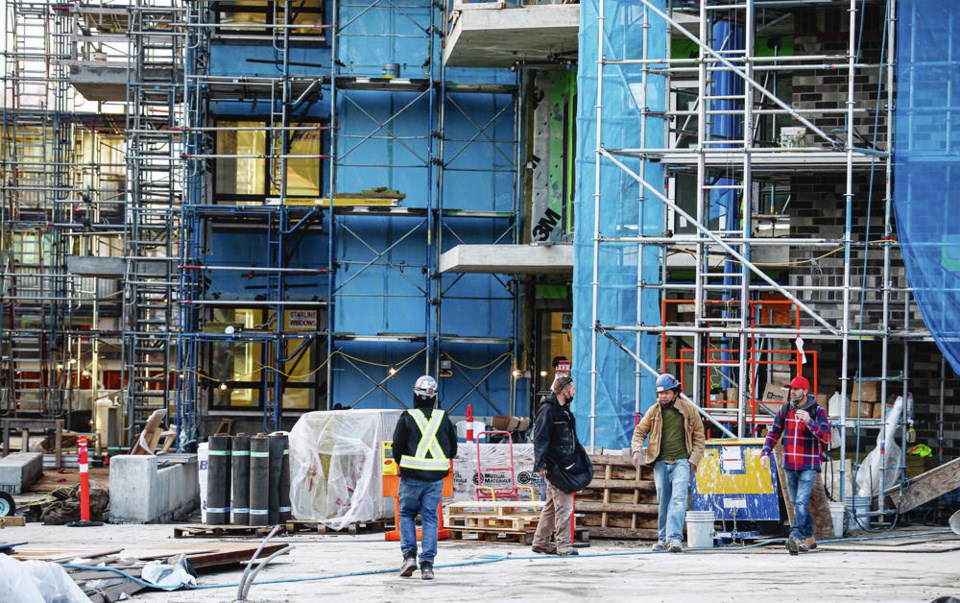Though the pace of building on the Island remains down slightly from 2019 due to the pandemic, it appears to have rebounded in the third quarter of this year, according to figures released Wednesday by the 91原创 Island Construction Association.
The association said $681.6 million worth of permits was issued in the third quarter, a 40 per cent jump from the second quarter. However, that figure was still 13 per cent below the amount issued in the third quarter of last year.
The value of non-residential permits rose 252 per cent to $254.5 million between July and September of this year, and commercial permits jumped 416 per cent to $210.5 million. Institutional-government permits rose by 66 per cent to $28 million in the quarter, while industrial permits fell 31 per cent.
In Greater Victoria, total non-residential construction spending is down 19.5 per cent through the first eight months of this year to $31 million, while residential construction investment rose by 4.4 per cent to $145.5 million at the same time.
“Interest in communities across the Island has been strong during the last number of years, and despite the coronavirus pandemic, shows signs of continuing,” said association chief executive Rory Kulmala.
Kulmala said the Island’s smaller communities have continued to experience a significant volume of residential building, as demand for housing has been strong.
“We suspect retirees are continuing to come here in search of affordable housing options,” Kulmala said, adding more urban workers might also be considering smaller towns as they continue to work from home.
“Rural towns and villages are becoming more popular because of their lower home prices and increased livability,” he said.
A rebound in construction was evident in the Comox Valley, which saw permit values surge 123 per cent in the third quarter while Strathcona saw a 52 per cent increase.
Construction employment remained fairly healthy across the entire Island, with 34,000 workers in the third quarter of this year, down from 38,300 in the third quarter of last year. Employment in Victoria’s construction sector remained steady, with 16,600 in the third quarter of this year compared with 16,000 at the same time last year.
Kulmala said the industry has managed to weather the storm of the COVID-19 pandemic, despite uncertainty as to how long it will last and how the country will recover.
He suggested the mid-term outlook will depend on restrictions generated by the second wave of the virus. If the second wave does not cause further movement restrictions, the 2021 outlook will be brighter and construction will likely increase over this year.



